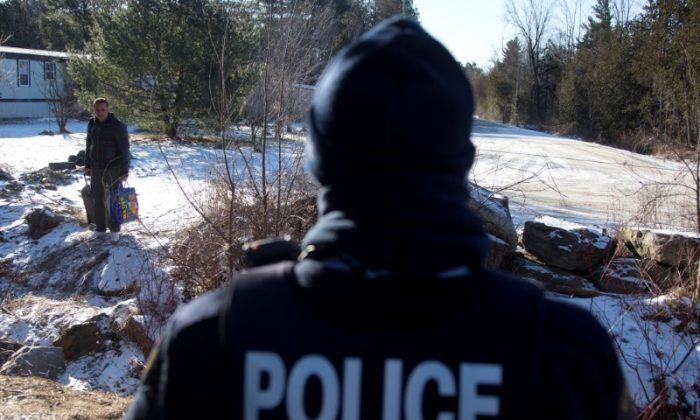The federal government is considering purchasing hotels to house a growing number of asylum seekers, responding to “unprecedented flows” of migrants and refugees.
“Purchasing and converting hotels is an option being considered, among a number of others. Decisions and new developments would be communicated in due course,” an Immigration Refugees and Citizenship Canada (IRCC) spokesperson said in an email to The Epoch Times.
The IRCC said Canada is “not immune” to the global trend of migrants and refugees seeking out other countries, and said Ottawa is committed to working together with municipalities, provinces, and territories to respond.
“There is no simple solution but we are confident that, with everyone at the table, we can implement long-term, sustainable, and compassionate measures that will ensure that the most vulnerable newcomers have a roof over their heads,” the spokesperson said.
Immigration Minister Marc Miller announced in January that Ottawa would
be giving an extra $362 million to provinces and municipalities to temporarily house asylum seekers, with $100 million of that funding going to Quebec. Mr. Miller said at that time that 7,300 asylum claimants needed housing and were staying in 4,000 hotel rooms across six provinces.
“This program is important because it gets shelters over people’s heads, particularly with the temperature that it is outside. But it needs reform, and that’s something that will have to be worked on ... in the coming months,” Mr. Miller said at the time. “I think we owe it to Canadians to reform a system that has very much been a stopgap measure since 2017 to deal with large, historic flows of migration.”
According to the IRCC’s
report to the Senate national finance committee in May, the immigration department has spent $1.76 billion in direct subsidies for temporary shelter for asylum seekers since 2017. The department has provided $960 million in shelter subsidies paid to municipalities and provinces through an Interim Housing Assistance Program, while another $796.5 million was given to hotels.
The report said that while asylum claimants had previously been expected to find their own housing or use provincial and municipal shelters, the “higher volume of claimants” since 2017 necessitated the federal government stepping in.
The agency also highlighted that Budget 2024 includes $1.1 billion over three years to extend the Interim Housing Assistance Program. It said the funding for 2026–’27 will be conditional on provincial and municipal governments making investments in “permanent transitional housing solutions for asylum claimants,” with IRCC working with partners to transition from an “emergency response to building longer-term temporary housing for asylum claimants.”
Rising Immigration
Beside rising asylum claims, Canada has accepted unprecedented numbers of immigrants in recent years, putting further pressure on housing. A total of 437,000 new permanent residents entered the country in 2022, while 471,000 entered in 2023.Quebec Premier François Legault has been among the most vocal on the issue,
saying in January that his province was at “breaking point” due to the number of asylum seekers entering. He has threatened holding a referendum on immigration, saying he wants to have more powers over the issue.
Conservative Leader Pierre Poilievre has also been criticizing the situation, saying he would tie the number of new immigrants coming into Canada with the availability of housing. He has also said he would reduce immigration numbers from their current level.
“It’s impossible to invite 1.2 million new people to Canada each year when we build 200,000 homes. It’s impossible. There is no place. Quebec is at the breaking point,” he said.
In response to immigration concerns, Mr. Miller
announced in March that Canada would set a “soft cap” on the number of new temporary resident arrivals when putting its immigration plan into place in the fall. He said this would reduce the number of temporary residents from 6.2 percent to 5 percent of the population over the next three years.
In May, Prime Minister Justin Trudeau also said Canada needed to both provide a path to citizenship for undocumented immigrants and speed up deportation proceedings in other cases. He said the government would continue adjusting the immigration system to ensure Canada is “bringing in people in the right way to continue to grow our communities and our economy.”
Ottawa recently
announced that foreign nationals with temporary status in Canada would no longer be allowed to apply for a post-graduation work permit at the border. Mr. Miller said in June that this would reduce “flagpoling,” a workaround method where temporary residents bypass long waits and processing times associated with online or paper applications.







